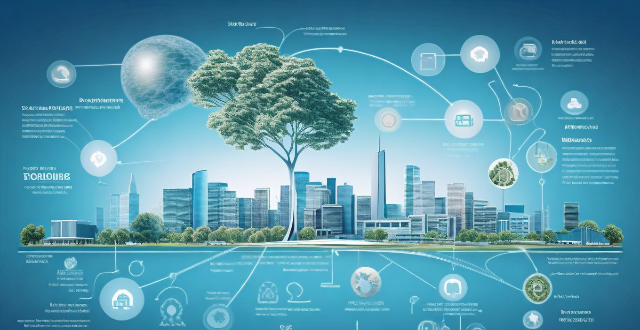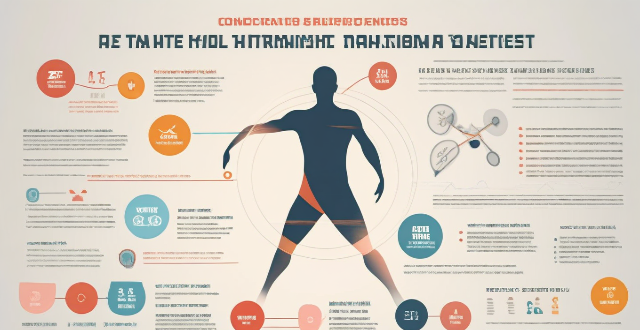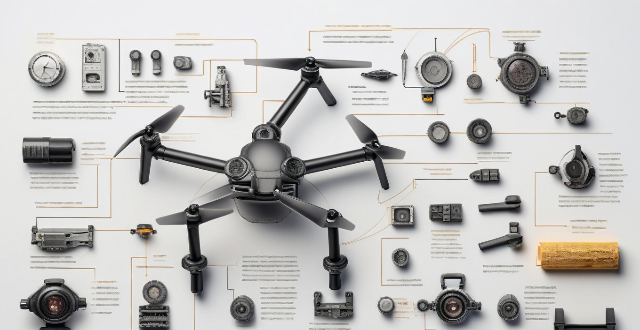Technology Data

How has the use of wearable technology impacted sports data analysis ?
Wearable technology has revolutionized sports data analysis by enabling real-time performance monitoring, injury prevention, training optimization, and strategic decision-making. Athletes can receive immediate feedback on their performance metrics, while coaches can tailor training loads and develop game plans based on accurate data. Wearables also aid in injury prevention and recovery tracking. Fan engagement is enhanced through interactive experiences and broadcast enhancements. Future developments include advanced analytics and integration with other technologies. Overall, wearable technology has significantly transformed sports data analysis for the betterment of athletes' health, performance, and team strategies.

How is blockchain technology being used to secure patient data in the healthcare sector ?
Blockchain technology is transforming healthcare by securing patient data through decentralization, immutability, encryption, and smart contracts. It also facilitates interoperability, standardizes data formats, and enables supply chain management and audit trails. This technology enhances patient care and privacy, with potential for further innovations in the future.

What are the latest trends and advancements in climate data analysis technology ?
Latest Trends and Advancements in Climate Data Analysis Technology Climate data analysis has become increasingly important in recent years as scientists work to understand the impact of climate change on our planet. With advancements in technology, new methods for analyzing this data have emerged, leading to a better understanding of the complexities of the climate system. Here are some of the latest trends and advancements in climate data analysis technology: Artificial Intelligence and Machine Learning: One of the most significant developments in climate data analysis is the use of artificial intelligence (AI) and machine learning (ML). These technologies can process vast amounts of data quickly and accurately, allowing researchers to identify patterns and trends that would be difficult or impossible to detect manually. For example, AI and ML algorithms can analyze satellite images to track changes in ice coverage or monitor deforestation rates. Big Data Analytics: The volume of climate data available today is enormous, and big data analytics tools are essential for managing and interpreting this information. These tools can help researchers identify correlations between different variables, such as temperature changes and extreme weather events. They can also be used to create predictive models that forecast future climate conditions based on current trends. Cloud Computing and Remote Sensing: Cloud computing has made it possible for researchers to access and share large datasets from anywhere in the world. This has led to increased collaboration among scientists working on climate-related projects. Remote sensing technologies, such as drones and satellites, are also being used more frequently to collect climate data. These tools can provide real-time information about changes in the environment, allowing researchers to respond quickly to emerging issues. Blockchain Technology: Blockchain technology is another promising development in climate data analysis. By using a distributed ledger system, blockchain can ensure that climate data is secure, transparent, and immutable. This means that once data is recorded on the blockchain, it cannot be altered or deleted, ensuring its integrity over time. Additionally, blockchain can facilitate the sharing of climate data across organizations and countries without compromising security or privacy concerns. Citizen Science and Crowdsourcing: Citizen science and crowdsourcing initiatives have become increasingly popular ways to gather climate data. These programs involve members of the public in collecting and contributing data about their local environments. By harnessing the power of crowdsourcing, researchers can gather vast amounts of data from diverse locations around the world, providing valuable insights into global climate patterns and trends.

Can blockchain technology improve data security and privacy ?
Blockchain technology has been touted as a revolutionary tool that can improve data security and privacy. Its decentralized nature, encryption, and transparency make it difficult for attackers to compromise the network. Additionally, its anonymity, control over personal data, and smart contracts enhance privacy by giving individuals more control over their information.

How can technology be used to promote vaccine equity ?
Technology can promote vaccine equity by improving accessibility, monitoring, and distribution. Digital awareness campaigns, telemedicine services, real-time data tracking, data analytics, automated logistics systems, and cold chain management are some of the ways technology can be used to achieve this goal. By leveraging technology, we can bridge the gap between the haves and the have-nots, making vaccines accessible to all sections of society.

What is sports technology analysis ?
Sports technology analysis is a process of using advanced technologies to collect, analyze, and interpret data related to sports performance. The goal of sports technology analysis is to improve athletic performance, enhance coaching effectiveness, and optimize team management. Key areas of sports technology analysis include biomechanics, physiology, video analysis, wearable technology, and data analytics. By utilizing these tools and techniques, coaches can gain valuable insights into athletes' physical abilities, training methods, equipment usage, and game strategies. This leads to better overall performance and increased success in competitions. Sports technology analysis also enhances coaching effectiveness by providing coaches with detailed information about athletes' strengths and weaknesses, allowing them to develop more effective training programs that target specific areas for improvement. Additionally, sports technology analysis helps optimize team management by monitoring players' workloads and fitness levels through wearable technology and other tracking systems. Overall, sports technology analysis is a powerful tool that allows coaches to make more informed decisions about player development, game strategies, and team management.

How accurate is sports technology analysis ?
Sports technology analysis has become increasingly popular in recent years, with the development of advanced technologies such as sensors, wearable devices, and machine learning algorithms. These technologies are used to collect and analyze data from athletes' performance during training and competitions, providing valuable insights into their physical condition, technique, and strategy. However, the accuracy of sports technology analysis is a topic of debate among experts. In this article, we will explore the factors that affect the accuracy of sports technology analysis and discuss its limitations.

How has technology improved food safety monitoring and compliance ?
This article discusses how technology has played a crucial role in enhancing food safety measures. It covers traceability systems, sensor technology, data analytics, automation and machine learning, and blockchain technology. Traceability systems allow for the tracking of products from farm to table using barcodes, QR codes, and RFID tags. Sensors monitor various parameters that impact food safety, such as temperature, humidity, and chemical composition. Data analytics tools process vast amounts of collected data to identify patterns, trends, and potential risks. Automated systems reduce human error and increase efficiency in food processing plants, while machine learning algorithms enhance decision-making processes based on learned behaviors from past data. Blockchain offers a decentralized way to record transactions securely and transparently when applied to food supply chains. By leveraging these technological advancements, we can work towards a future where food safety concerns are minimized, benefiting both consumers and industry stakeholders alike.

How has sports technology analysis evolved over time ?
The evolution of sports technology analysis has transformed the way we understand and improve athletic performance. From manual methods to advanced analytics, wearable technology, and artificial intelligence, coaches and analysts now have access to more accurate and comprehensive data than ever before. This has allowed for more informed decision-making and optimized training programs, ultimately leading to better overall performance in sports.

What is the role of technology in facilitating climate cooperation among nations ?
The article discusses the crucial role of technology in fostering international collaboration on climate change. It outlines various ways technology aids in monitoring environmental changes, sharing data, and implementing climate strategies. Key points include remote sensing for real-time monitoring, open data platforms for accessibility, smart grids for energy management, and mobile applications for engaging individuals in eco-friendly practices. Overall, technology is emphasized as a vital tool for nations to address climate change collectively.

How can technology improve the process of climate information sharing ?
In this topic summary, we will discuss how technology can improve the process of climate information sharing. Technology has revolutionized the way we share and access information, including climate data. With advancements in technology, it is now easier than ever to collect, analyze, and disseminate climate information to a wide range of stakeholders. Data collection and analysis are crucial steps in the process of climate information sharing. Remote sensing, ground-based sensors, and data analysis software are some of the tools that can be used to collect and analyze climate data. These tools can help us monitor changes in climate patterns over time, identify trends and predict future climate events. Dissemination of climate information is another important step in the process. Online platforms, social media, and open data initiatives are some of the ways that climate information can be shared with researchers, policymakers, and the general public. These platforms can also offer interactive tools for visualizing and exploring the data. Collaboration and partnerships are also essential in improving the process of climate information sharing. Cloud-based collaboration tools, partnerships with tech companies, and crowdsourcing are some of the ways that researchers and stakeholders can work together on climate projects, sharing data and insights in real-time. In conclusion, technology plays a crucial role in improving the process of climate information sharing by enhancing data collection and analysis, facilitating the dissemination of climate information, and fostering collaboration among stakeholders. As technology continues to evolve, we can expect even more innovative solutions for addressing the challenges posed by climate change.

What role do technology companies play in protecting privacy rights ?
The role of technology companies in protecting privacy rights is crucial. They are responsible for ensuring that user data is collected, stored, and used responsibly. This includes providing transparency about data collection practices, obtaining explicit consent, limiting data collection to necessary information, and implementing robust security measures. Technology companies should also allow users to control their personal information by providing easy access, modification, and deletion tools, as well as options to opt-out of data sharing. By following these best practices, technology companies can build trust with users and promote a culture of privacy protection within the industry.

What are the most innovative applications of technology in the healthcare industry ?
The healthcare industry has seen significant advancements due to innovative applications of technology. Telemedicine allows patients remote access to care, reducing travel time and increasing efficiency. Wearable devices track health metrics, promoting healthy habits. AI and machine learning analyze medical data for accurate diagnoses and personalized treatments. Robotic surgery systems enhance precision in minimally invasive procedures. Blockchain technology secures sensitive medical data sharing among providers.

How does AI technology help with injury prevention in sports ?
AI technology is revolutionizing sports injury prevention by providing valuable insights into an athlete's physical condition, performance, and risk factors. Through data analysis, real-time monitoring, biomechanical analysis, recovery support, and injury surveillance, AI technology helps coaches, athletes, and medical professionals take proactive steps to prevent injuries and promote safer sports environments.

What kind of equipment is needed for sports technology analysis ?
The article discusses the various types of equipment needed for sports technology analysis, including video cameras, wearable devices, force plates, radar guns, and software applications. These tools are essential for capturing and processing data effectively to gain insights into athletes' performances and help coaches make informed decisions.

How does sports technology analysis help athletes improve their performance ?
Sports technology analysis is a crucial tool for athletes to enhance their performance by leveraging advanced technologies. It helps in data collection and analysis, video analysis, biomechanical analysis, virtual reality training, and recovery tracking. By collecting vast amounts of data through wearable devices, sensors, and cameras, athletes can track various metrics such as heart rate, speed, distance, and power output. Video analysis provides a visual representation of an athlete's performance, identifying technical errors or areas for improvement in their technique or strategy. Biomechanical analysis studies the mechanics of human movement to optimize athletic performance, using specialized equipment to analyze an athlete's movements. Virtual reality training simulates game scenarios and provides realistic training environments, allowing athletes to practice and refine their skills in a controlled setting. Recovery tracking monitors an athlete's physiological responses during recovery periods, ensuring that they are adequately rested and ready for competition or training sessions. Overall, sports technology analysis enables athletes to make data-driven decisions that lead to improved outcomes.

How can technology help in designing and monitoring a sports training plan ?
Technology has revolutionized sports training, allowingTechnology has revolutionized sports training, allowing workout programs through wearable devices allowing for more personalized and efficient workout programs through wearable devices, data analytics, and virtual training environments. It aids in designing training plans by collecting performance data, tracking movement patterns, simulating game scenarios, and customizing regimens based on individual needs. Technology also enhances monitoring progress with real-time feedback, recovery management tools, and adaptive goal setting features. These advancements provide valuable insights that traditional methods cannot match, shaping the way athletes reach their peak performance.

What are the benefits and drawbacks of using wearable technology during exercise ?
Wearable technology offers real-time feedback, goal setting and tracking, data analysis, safety features, and social connectivity during exercise. However, it can be expensive, lead to dependency on technology, provide inaccurate data, and be distracting. It is important to use these devices wisely and in conjunction with other forms of exercise tracking.

What is data privacy ?
Data privacy is the protection of personal information from unauthorized use. It's important for individual rights, building trust, legal compliance, and risk mitigation. Principles include data minimization, anonymization, encryption, transparency, consent, access control, retention, integrity, and accountability. Best practices involve regular audits, employee training, updating policies, secure systems, and response plans for data breaches.

What are the benefits of using satellite technology for environmental monitoring ?
Satellite technology offers numerous benefits for environmental monitoring, such as wide coverage area, high temporal resolution, cost-effectiveness, objectivity and accuracy, multispectral imaging capabilities, real-time data accessibility, long-term data analysis, and global collaboration opportunities.

Why is data encryption important for online security ?
Data encryption is crucial for online security, protecting dataData encryption is crucial for online security, protecting data the financial impact of breaches It has evolved from ancient uses to a critical tool in today's digital landscape, with AI optimizing key management and enhancing algorithms.

How can blockchain technology be used in supply chain management ?
Blockchain technology is poised to revolutionize supply chain management by offering transparency, traceability, and security. Smart contracts automate transactions, while secure data sharing promotes collaboration. The technology also reduces manual processes, paperwork, and enhances compliance.

What are the most promising applications of blockchain technology ?
Blockchain technology offers secure, decentralized, and transparent solutions in various industries. Promising applications include cryptocurrencies, smart contracts, remittances, trading, supply chain traceability, healthcare data management, real estate ownership, government services, and more. These applications can streamline processes, reduce costs, and improve trust and collaboration between parties. As the technology matures, more innovative uses are expected to emerge.

Why is data privacy important ?
Data privacy is crucial in the digital age, protecting individuals and benefiting organizations. It ensures control over personal information, prevents misuse, and builds trust. Organizations mitigate risks, gain customer loyalty, and comply with laws by prioritizing data privacy. Key principles include transparency, individual control, data minimization, and security measures. Data privacy will continue to shape the relationship between individuals and technology, balancing innovation and privacy rights.

What are the potential risks associated with mobile communication technology ?
The text discusses the potential risks associated with mobile communication technology, which include security risks such as data breaches and malware attacks, privacy risks like location tracking and surveillance, health risks including radiation exposure and eye strain, social risks such as addiction and cyberbullying, and economic risks involving high costs of data plans and job displacement. It emphasizes the importance of being aware of these risks and taking appropriate measures to mitigate them.

What role does technology play in climate adaptation ?
The article discusses the various ways in which technology can aid in climate adaptation. It mentions data collection and analysis, modeling and prediction, infrastructure development, agriculture and food security, water management, and health and well-being as key areas where technology is used. The article concludes that technology plays a crucial role in understanding and mitigating the challenges posed by climate change.

What role does technology play in modern education systems ?
The text discusses the role of technology in modern education systems, highlighting its ability to enhance accessibility, personalize learning experiences, improve collaboration and communication, refine assessment methods, and facilitate lifelong learning. It also acknowledges potential challenges such as the digital divide, overreliance on technology, and data privacy concerns. The conclusion emphasizes that while technology offers numerous opportunities for education enhancement, it should be integrated thoughtfully to avoid potential pitfalls.

How can technology be used to monitor and predict climate conflicts ?
Climate conflicts, exacerbated by competition for natural resources, have significant impacts. Technology is crucial in monitoring and predicting these conflicts through satellite imagery, data analytics, GIS, social media monitoring, mobile technology, and collaboration platforms. These tools help in early warning, predictive modeling, mapping disputes, sentiment analysis, citizen reporting, information dissemination, and multi-sector coordination.

What role does technology play in improving environmental monitoring ?
Technology plays a pivotal role in enhancing environmental monitoring by enabling advanced data collection, analysis, visualization, reporting, and conservation efforts. Satellite imagery, drone surveillance, sensor networks, big data analytics, GIS, real-time reporting systems, and early warning technologies are among the key tools used. These advancements not only improve our understanding of environmental changes but also aid in managing resources and raising public awareness about ecological issues.

What are the benefits of using data analytics in education ?
Data analytics has become an increasingly popular tool in education, offering benefits such as improved student performance through personalized learning and early intervention, enhanced teaching practices with curriculum development and professional development, and better decision making with evidence-based decision making and transparency. As technology advances, data analytics is likely to become an even more integral part of the educational landscape.